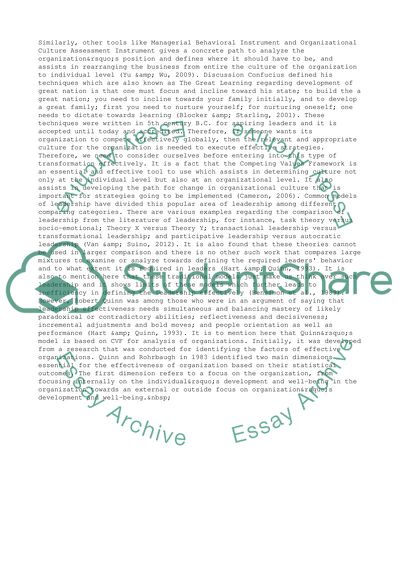Cite this document
(“Competing Value Framework Research Paper Example | Topics and Well Written Essays - 1250 words”, n.d.)
Competing Value Framework Research Paper Example | Topics and Well Written Essays - 1250 words. Retrieved from https://studentshare.org/management/1480923-analysis-of-the-competing-values-framework
Competing Value Framework Research Paper Example | Topics and Well Written Essays - 1250 words. Retrieved from https://studentshare.org/management/1480923-analysis-of-the-competing-values-framework
(Competing Value Framework Research Paper Example | Topics and Well Written Essays - 1250 Words)
Competing Value Framework Research Paper Example | Topics and Well Written Essays - 1250 Words. https://studentshare.org/management/1480923-analysis-of-the-competing-values-framework.
Competing Value Framework Research Paper Example | Topics and Well Written Essays - 1250 Words. https://studentshare.org/management/1480923-analysis-of-the-competing-values-framework.
“Competing Value Framework Research Paper Example | Topics and Well Written Essays - 1250 Words”, n.d. https://studentshare.org/management/1480923-analysis-of-the-competing-values-framework.


